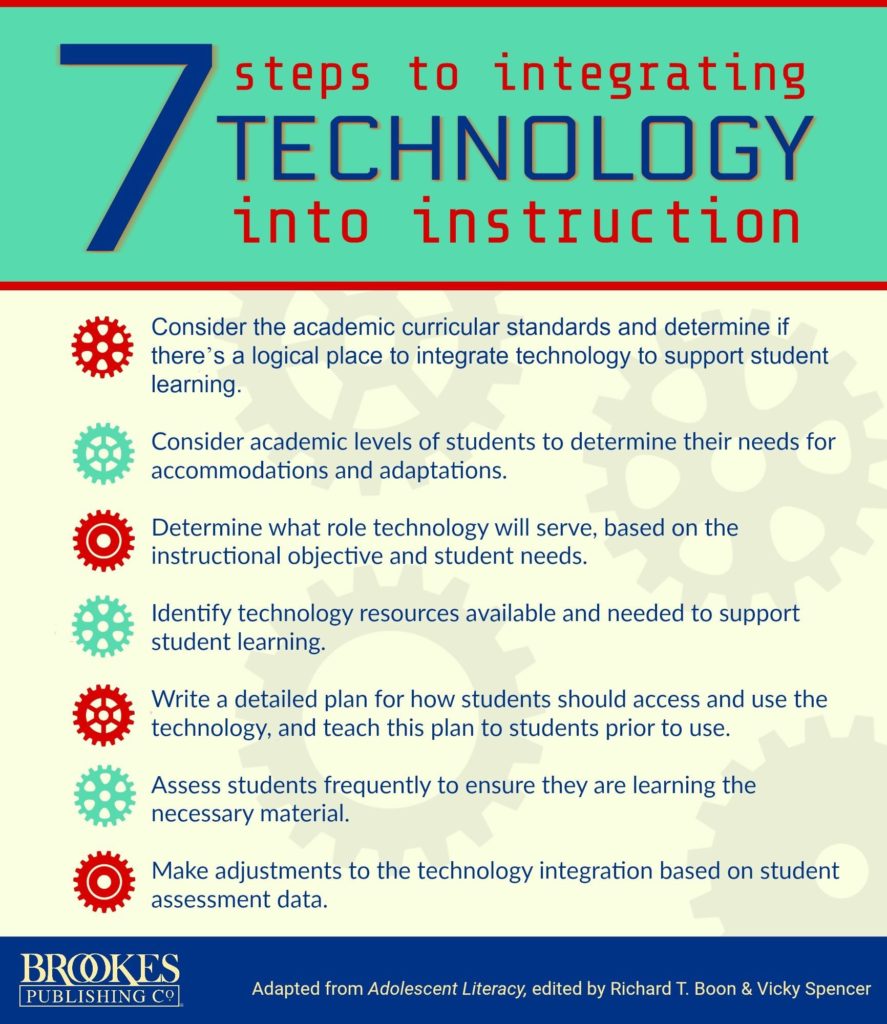Trained teachers open to successful integration of technology in classrooms can benefit students in becoming the best, productive and creative 21st century citizen we need them to be.
By Farrah Kellingebeck
Technology has become an integral part of classroom K-12 education. Administration is looking for different ways educators integrate technology into lessons and classroom management. There are so many different ways to integrate technology, it’s is really picking a method that you are comfort using and making sure the method is beneficial to the students learning. Technology integration is the use of technology resources — computers, mobile devices like smartphones and tablets, digital cameras, social media platforms and networks, software applications, the Internet, etc. — in daily classroom practices, and in the management of a school (Edutopia.org, 2007).
Why integrate technology into classrooms?
Technology is so prevalent in the daily lives of people today, that it would be a disservice to students in the classroom not to incorporate technology into lessons to make the lessons more engaging. Once students are outside of the classroom, they are engaged in some form of technology, therefore they should be engaged in technology in the classroom as well. Most homes have connected computers or Internet-enabled devices. As prices of technology drop, computers and digital devices may replace television as we know it. Technology, when integrated into the curriculum, revolutionizes the learning process. More and more studies show that technology integration in the curriculum improves students’ learning processes and outcomes. Another reason for technology integration is the necessity of today’s students to have 21st century skills.
These 21st century skills include (as noted in Edutopia.org, 2007):
- personal and social responsibility
- planning, critical thinking, reasoning, and creativity
- strong communication skills, both for interpersonal and presentation needs
- cross-cultural understanding
- visualizing and decision making
- knowing how and when to use technology and choosing the most appropriate tool for the task
How to integrate technology in the classroom?
Most classes in America, now, have computers in the classrooms. Some may have more then others and some may have none. Some have different forms of computer devices that offer internet access. With this technology readily available in classroom and technology assisting our daily lives, one would think every teacher across America is using this technology in the classroom. Well, this is not happening. Most teachers are having a difficult time incorporating technology into lessons. As I stated earlier, technology integration is when technology resources such as computers, mobile devices like smartphones and tablets, digital cameras, social media platforms and networks, software applications, the Internet, etc. are used in daily classroom practices, and in the management of a school. Successful technology integration is achieved when the use of technology is a routine and transparent, accessible and readily available for the task at hand and supports the curricular goals and helps the students to effectively reach their goals (Edutopia.org, 2007).

Successful Integration
When technology integration is at its best, a child or a teacher doesn’t stop to think that he or she is using a technology tool, it is second nature. And students are often more actively engaged in projects when technology tools are a seamless part of the learning process. For example, I teach 4th grade Math, we are constantly being told to start each lesson with a struggle problem. Give the students a math problem to solve that they will struggle with before teaching the lesson on solving that problem. I decided to teach them how to use the internet to help them figure out their problem in a group. I typically only have about 6 computers, so there is one computer per group. The students use YouTube and based on the learning objective and the type of problem on display on the board, the group have to collectively decide on what to type in the search bar to pull up tutorial videos on solving the problem they are struggling to solve. As the year progressed, the students were able to complete this task within the 15-minute window I initially allotted. It became routine for the students to walk into class on Mondays, pull a laptop and refer to the board for the struggle problem. This was a great tool for the students because when they were stuck at home on math problems, they knew how to find help/assistance through the internet on any device that had access. It also front-loaded the students with information on the lesson they are about to learn. This is one way I decided to incorporate technology into my lessons to help support the curricular goals.

Reference
Edutopida.com. (November 2005) What Is Successful Technology Integration? Retrieved from
https://i.pinimg.com/originals/06/45/9c/06459cc65bf5558bb101e0a80c295f77.jpg
Edutopida.com. (November 2005). Why Do We Need Technology Integration? Retrieved from
https://www.edutopia.org/technology-integration-guide-importance